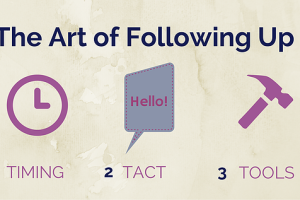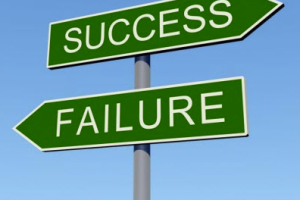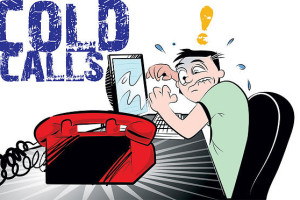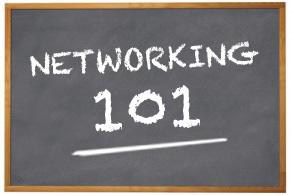According to a widely cited report by the Radicati Group, the average business person sends and receives more than a hundred emails—every single day. And that number is only expected to grow.
Undoubtedly, email is a powerful tool for sales correspondence, but when our message is just one of a hundred our recipient might receive that day, the odds of it hitting its mark are already stacked against us. What steps can we take to ensure that we’re doing our best to penetrate that wall of electronic overload?
Here are four suggestions for a comprehensive overhaul of how we approach email—a way to trim the fat and season the meat of our communications for maximum effectiveness.
- Be purposeful.
How often do we open our email client, hit the “New Mail” icon, and just start typing—without taking the time to thoughtfully plan out what we intend to say? Far too often, it seems. Email has made it very easy for us to send half-baked ideas out into the world, and that’s a problem. It’s why some of us end up sending overly long (or overly succinct) emails that confuse rather than nurture our desired outcomes.
We don’t necessarily need to outline the whole email in advance, but we do need to decide what we hope to accomplish with each message. Are we writing primarily to…
- Share new information?
- Get more information from someone else?
- Ask the recipient to do something for us?
- Follow up on something the recipient previously asked to do?
Such questions can help us figure out the why that will drive the what and how of our communication. Once we know why we’re writing, we can get a better idea of what we need to say—and how best to say it.
This is super important, because one of the biggest mistakes we make is trying to accomplish too much with one email. It’s probably too ambitious for us to introduce ourselves, explain all the comparative advantages of our solution, and schedule an in-person consultation all in one message. The recipient will be overwhelmed—and likely paralyzed—leading to radio silence, even if he or she is genuinely interested. What if, instead, we decided that our goal was simply to introduce ourselves and pique a little interest? Our email could be far more focused, highlighting just one or two facets of our solution and asking for permission to talk further or send over some more information.
The most important thing we need to define in our email planning is what our call to action (CTA) will be. Regardless of whether our purpose is to inform, to inspire, to persuade, or to request something of the recipient, we need to have a clear idea of what concrete thing we’re asking the recipient to do in order to move us toward the next step. And sometimes that means we have to set it up for them very explicitly. For example:
I’d like to schedule some time to visit with you this week, if you’re available. What time works for you?
Could I sign you up to receive our monthly e-newsletter?
Would you mind if I send over a couple case studies from clients we’ve worked with in the past?
We could multiply this list indefinitely. The point is that all of these leave the email with a clear sense of what it will look like to keep the conversation going, and they clarify the purpose for which we’re sending the message at hand. Once we know what our CTA will be, we can fashion the email to funnel the reader toward a favorable response—and ruthlessly avoid content that would distract from that purpose.
- Be interesting.
Here’s where the rubber meets the road. If we want our emails to stand out from the crowd, we have to communicate something interesting. Otherwise, we can be sure they won’t be reading for long—assuming they even open the email in the first place.
Of course, what interests a C-suite executive is going to be different from what interests an overworked executive assistant. So we have to gain some insight into the unique perspectives and pain points that our readers (or potential readers) are facing. For the sake of this discussion, we’ll assume we’ve already done our homework and have a pretty good idea of our recipient’s decision-making context.
If there’s one thing that all readers are interested in hearing about, it’s themselves. They want to know how what we have to say is going to benefit them, impact their bottom line, or otherwise come to bear on their day-to-day routines. They’re not likely to read very far into an email that sounds like a generic “blast” sent out to dozens of different people at once.
The more relevant we can make our email, the better. The more it reflects the needs of the recipient, the more interesting it will be. And here are a few pro copywriting tips to help us get there:
- Write a compelling subject line. The open rate on emails with uninteresting—or obviously solicitous—subject lines is abysmally low. Instead of writing something boring (“Product Brochure”) or smarmy (“SCORE! You’re not going to want to miss this!”), craft a subject line with the same care that a newspaper would apply to a front page headline. Make it something that practically has to be inspected further, perhaps by teasing a potential takeaway for the recipient (“Would you like to spend less time on A/B testing?”). Or find some other way to make it personal: “Been thinking about our conversation…” or “That white paper we discussed,” etc.
- Be complimentary. Avoid even a hint of criticism, except when specifically invited to offer feedback. Instead, major on positives—things the recipient is doing well—and find ways to offer more (“You seem to have a very loyal team. Have you considered ways to leverage that in your favor? Our software can help you identify potential leaders by…”).
- Make it personal. Add little snippets of information that demonstrate attention and interest in the recipient’s situation (“You mentioned having trouble with high turnover lately. We have a client who was facing something similar, and…”).
- Always provide new value. Ideally, each email will include something that tangibly benefits the recipient. When responding to questions, give clear answers, coupled with follow-up questions or CTAs that can help the recipient take the next step. When providing information, give clear, thoughtfully edited copy that directly speaks to the recipient’s understood needs. And when following up with an on-the-fence prospect, consider including something objectively useful, such as a case study, a link to a relevant news article, or comments on something that the recipient recently posted to their blog or website. Anything that directly impacts the recipient in a positive way and makes their life easier or more pleasant is valuable—and it increases the likelihood that the email will get a response.
- Be concise.
Possibly the most important skill we can learn, if we want to communicate effectively in writing, is the skill of writing concisely—of using only as many words as necessary to get our point across. Many people assume that longer is better, but shorter emails frequently get more traction. Why? Because they’re more likely to be read—completely and accurately.
Consider the following statement:
I know your schedule is super busy, but we would all consider it a very great honor if you’d think about joining us at our upcoming conference.
We can express essentially the same thing with 11 fewer words:
If your schedule permits, we’d be honored to have you join us at our upcoming conference.
Which would we prefer to receive? Perhaps this seems like a small edit, but just think about it: If we removed an average of ten words from each sentence in a ten-sentence email, that would amount to 100 words (a fifth of a page!) less that our prospect would have to read in order to get essentially the same information from us. In a world where our prospects likely receive dozens of new emails every single day, this kind of writing isn’t merely a matter of being clear. It’s a matter of being considerate.
Still, contrary to what we might think, “concise” doesn’t necessarily imply “short.” According to one definition, “concise” means “free from all elaboration and superfluous detail.” It means writing with brevity—a sensibility about what is and isn’t necessary to communicate at the present moment—and taking the time to thoughtfully edit our work down before hitting “Send.”
A concise email, then, may be shorter; or it may simply contain more information in the same amount of space. In either case, it’s free from unnecessary elaboration or irrelevant details—all of which distract from the main point. A concise email uses as few words as possible to convey as much actionable information as possible. It trims the fat and leaves the meat.
That’s why it’s so important for us to be purposeful in our writing. Once we know why we’re sending this email, we can better decide what is and isn’t necessary. Do we need to discuss all the technical specifications of our solution, or can we simply highlight a couple standouts—based upon our knowledge of the prospect’s needs—and offer to send over a white paper? Perhaps our prospect asked us for a detailed implementation timetable, or maybe they’d appreciate a narrative case study to share with their boss. If so, then a longer, information-dense email is wholly appropriate. But we do well to remember that words are expensive when we’re communicating with busy professionals. Let’s spend them wisely.
- Be human.
There’s something about written communication that seems to bring out people’s inner robots. Particularly in business contexts, we often revert to outdated formalities, using elevated words and expressions that we would probably never use in person—not even on a sales call. Such things may make us sound stilted or “out of touch” and may invite our prospects to disengage rather than “lean in.”
If we want to make a good impression with our emails, then, we need to sound like human beings. This isn’t a license to be sloppy, of course, but we should strive to write the way we speak.
Consider this follow-up email after a fruitful first sales visit:
Dear Mr. Steinbeck:
I appreciate the courtesy of your time yesterday. You clearly have superb command of your team, and I look forward to our partnership. I’ll be forwarding you a white paper on our solution shortly, and I’ll reach out a little later this week to talk with you about it.
Sincerely,
John David
At first glance, this email has a lot going for it. It’s interesting, eloquent, and concise. It sounds competent and intelligent. But it’s also elevated, formal, and a bit stodgy. What if Mr. Steinbeck wears t-shirts and shorts to work? What if he’s a laid-back executive who needs to know that we’re just as down-to-earth as he is?
In that case, we might write differently:
Hey Jake,
Thanks for your time yesterday. I love what you’re doing with your team, and I’m stoked to be working together. I’m about to send over that white paper we talked about so we can chat about it later this week. Take care until then!
John
Of course, being human in our emails won’t always mean sounding this casual. But it does mean sounding this relatable. Both in writing and in person, our communication ought to fit the relationship. It should advance and deepen the relationship, moving it toward mutually beneficial outcomes.
All of these things take practice—and openness to others’ feedback. But we don’t have to be phenomenal writers to compose effective emails. We just need to drop the act, get to the point, and offer something valuable. And isn’t that what sales is about in the first place?









Speak Your Mind